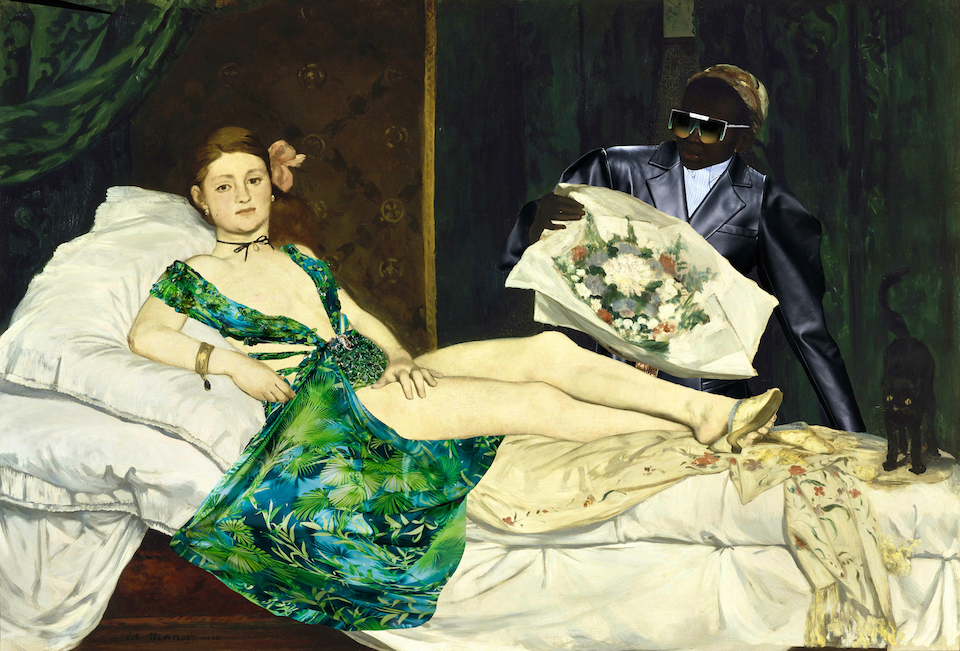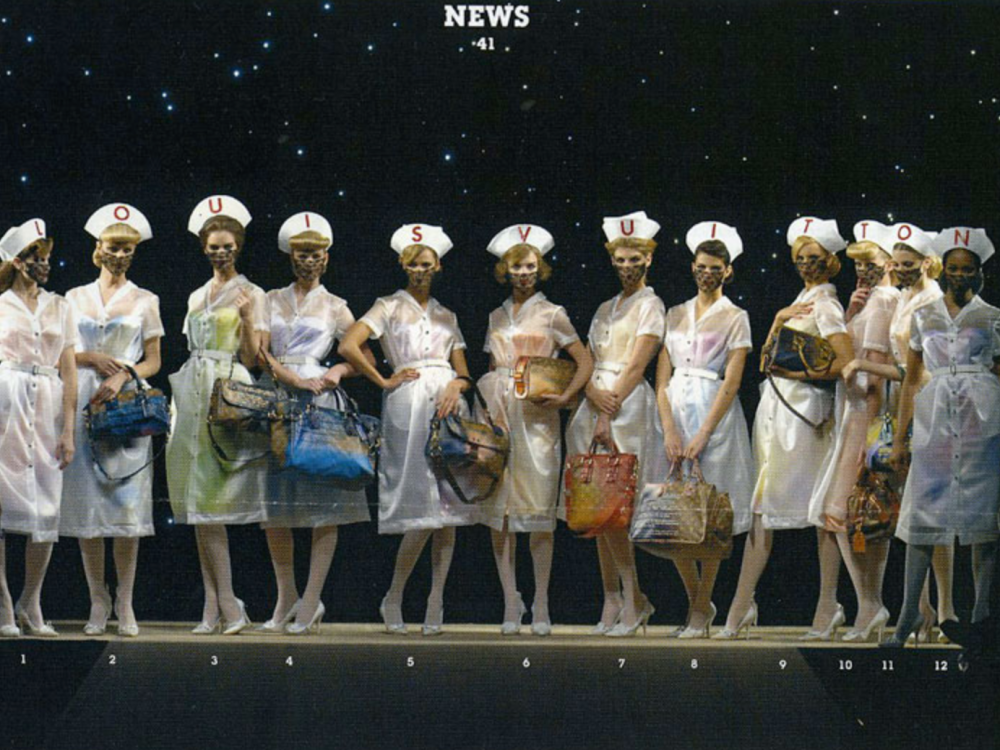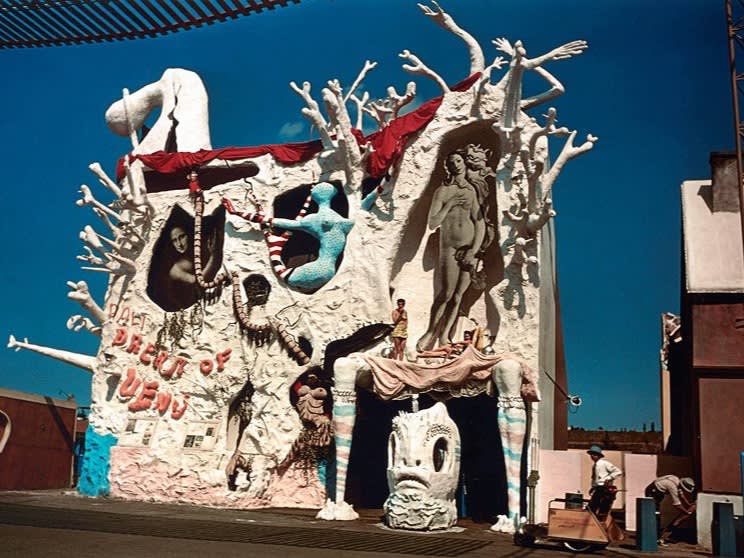
Warhol saw art in everyday stuff, moving soup cans from the supermarket aisles to museum walls.
Keith Haring had his Pop Shop. Damien Hirst, his “Pharmacy.” Andy Warhol had a freakin’ Factory. Whence this infiltration of retail into the presumably holy terrain of art and its places of worship, museums? What is the purview of art, anyway?
Art & the Everyday
For centuries, we’ve mostly removed art from the everyday — we have work to do, after all, and art isn’t productive. So we put it somewhere out of the way — someplace special, for sure, but somewhere distinctly removed from everyday life. With its pristine white walls and high ceilings, our museums are churches presenting the work of “masters.” In its hallowed halls, one speaks only in hushed tones. We revere the work, standing before it in silent appreciation, a prayer of sorts.
In The Birth of Tragedy, Nietzsche argues that, for the Greco-Romans, there was no hard and fast separation between their stuff and their art. The things of your home — vases and such — were art and stuff. (Excuse the long quote but it’s just too good to chop up.)
“But even the coarsest, most earthbound people had an unconscious longing for these complete, divine figures, and to satisfy this longing they surrounded themselves with a world of dreamy fantasies; they saw gods everywhere and sought to express them in human form and action, in sculpture and dance, in the drama and the mysteries…. Thus from the heart of nature and the city, with the wide-eyed gaze of the early morning, art arose, its creative power spilling over into all the other capacities of human existence: even in clay vessels, even in daily intercourse with the basest needs, it produced that celestial world of perfect forms and figures which later generations could barely conceive.”
The fact is, despite being put in museums, art has always been woven into the fabric of the everyday. That includes the long history of painting prostitutes, feasts, city streets—images that peer out from the prim walls of the museum. Or the many portraits which were commissioned by rich patrons, commerce shaping the art we see. The purview of art has always been sweeping, from the divine to the seemingly trivial. The contemporary segregation of art from life is neither inherent nor absolute.
Then there’s the fact that art is stuff (although there are performances and events that are ephemera). It’s something we buy and sell. A commodity. That’s never been more obvious today as we see an art market as suddenly volatile as crypto (well, not quite that volatile but you get the idea). So while we may like to think of art as holy artifacts to be kept apart from the crassness of commerce, art and commerce are inevitably intertwined.
Andy Warhol’s Factory

Warhol in The Factory
While we may like to think of the studio as a quasi-religious site where artists reckon truths of every sort, an artist’s studio is actually a factory of sorts. After all, it’s where artists make their products. (Even if our artist works alone, there’s always a presence of others — artists, critics, viewers — helping make the work what it is.) With his Factory, Warhol elevated art’s proletarian aspect.
Now, Warhol did have a crew of all sorts who functioned as an assembly line producing his silkscreens; meanwhile, there may have been a film being made. It was where he made art and his art is made of all kinds of things—made from the stuff of this life: people, soup cans, newspaper photographs. And, famously, parties. For Warhol, the artist’s studio is not a holy site removed from the sullying of the world. On the contrary, it’s precisely in the middle of things, in the party, the supermarket, the newspaper.

The parties at The Factory were not extraneous to Warhol’s art. On the contrary, his work is situated in and of the flow of everyday images.
The Factory’s shenanigans and practice were not extraneous to Warhol’s creations. We might say that, despite Warhol’s distinctly modern ethos, his art is Greco-Roman in Nietzsche’s sense where “even in daily intercourse with the basest needs, it produced that celestial world of perfect forms and figures which later generations could barely conceive.” Warhol’s art—his soup cans, Brillo pads, Jackies, and Marilyns—is distinctly of the world.
And yet, while being of the world, his art is also critical of the world. As Marshall McLuhan argued, art is an inherently critical operation, exposing the invisible “environments” in which we live. Warhol took on mass media’s dissemination of images, what Guy Debord might have called the Spectacle. As Warhol takes up the stuff of commerce and media, he shows us the environment of mass media images which circulate relentlessly, shaping our culture.
Keith Haring’s Pop Shop (and Thomas Hirschhorn’s Installations)

To enter Haring’s Pop Shop was to enter a Haring mural.
While by no means the first or only, Keith Haring became the most notable street artist of the 80s, covering New York City — and Mexico City and Barcelona, among others— with his distinctive characters and scenes, infinite murals and graffitied drawings of play and political pleading. With Haring, art was not confined to the established edifices of Art (capital A). It was everywhere, for everyone, an everyday burst of life, an alternative to museums’ silent solemnity.
In 1986, he opened his first Pop Shop in New York City at 292 Lafayette Street (and, later, a short-lived one in Tokyo). It was not just any store, not a neutral space which simply housed his art. The Pop Shop was art. To enter the space was to be inside a Haring mural. While museums maintain neutrality in order to show a variety of work, with the Pop Shop, Haring was free to not just create artifacts but create an immersive art experience.
Think of Thomas Hirschhorn, a contemporary Swiss artist who creates robust art installations that often take up the stuff of this world while radically rearranging it. Freed from the constraints of the museum’s white cube, Hirschhorn, like Haring with his Pop Shop, presents something other than art as object: he transforms everyday stuff into an artful experience of stuff that rearranges the very status of stuff. We see stuff anew.

Thomas Hirschhorn, “Too-Too, Much-Much,” 2010.
And yet, unlike Hirschhorn, Haring made his work available for purchase. You could pick pieces up. Imagine trying that in a museum! The Pop Shop enjoys a whiff of Martin Luther nailing his 95 Theses to the church’s door, breaking with the institutional art world, making art accessible to anyone beyond the confines of the museum’s walls, offering what Haring called “fast art” (like fast food). Openly embracing the commercial, Haring creates a different architecture of art, viewer, and world — a more playful, immersive twist on both the art and retail experience.
Damien Hirst’s Pharmacy

Damien Hirst, “Pharmacy,” 1992.
You walk in a room (in a gallery — in this case, the Cohen Gallery in New York in 1992). It’s bare, minimal, with white cabinets housing what looks like medicines. When you look closer, things get stranger. There are bowls of honeycomb on stools while a bug killer hangs above: the lure of honey, of a cure, while the inevitability of death hovers overhead.
Here, Hirst uses as his material not just the stuffs of a pharmacy—medicines and such—but the very concept and experience of a pharmacy. While you browse what is at once a pharmacy and not a pharmacy, you’re confronted with the anxiety, ambivalence, and cool beauty of the modern pharmakon, wondering: Is this healing? Can I wash sickness and death away? Which is to say, the pharmacy retail experience becomes another material in Hirst’s artist tool box (which includes paint as well as formaldehyde, carcasses, and such).
Commerce as the Stuff of Art

Andreas Gursky, “99 Cent,” 1999.
Gursky gives us an alien perspective on life, human affairs devoid of human meaning, human scale. It’s all images.
If, say, an alien were gazing down on us from afar, what would it make of all this selling and buying we do? From a certain perspective, it’s an exchange of crafted images: I give you a small image-totem — cash, card, phone tap — and, in return, I get variously shaped objects, each adorned with its own colors and images. Sculptures, one might say. From an alien perspective, what we think of as candy bars, sriracha, and soup cans become some kind of ritualistic exchange of art (if the alien knew what art was).
Meanwhile, art takes up commerce just as a painter takes up paint or a potter, clay. It is not just the physical material these artists use: it’s the very experience, the cultural milieu, of retail. By creating new relationships between art, commerce, and the everyday, these artists recast the environment of both art and retail, making both something new, different, playful, and critical.


